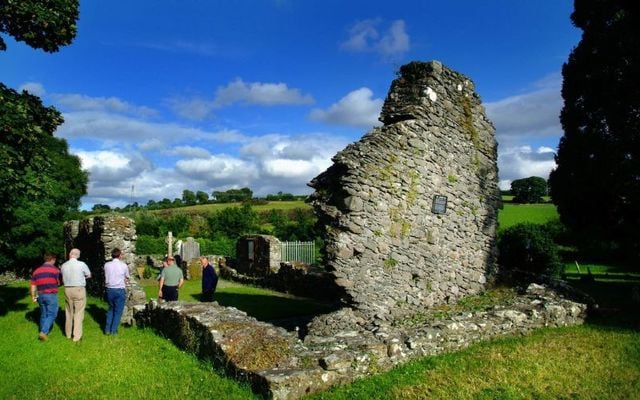Ireland is renowned for its many mysterious happenings. But a jumping church?
Possibly the most intriguing unsolved Irish mystery is that of the so-called jumping church at Kildemock, just outside of Ardee in County Louth. Kildemock holds a special place in the fertile folklore of Ireland’s smallest county.
The phenomenon is situated a couple of miles south of Ardee, just off the N2 (after leaving Ardee, heading towards Collon, turn left at the crossroads just before the Hunterstown Inn) and offers visitors an unnerving experience.
The feeling that something untoward took place hangs in the crisp country air, yet there is no menace about the place. Instead, it is an ideal venue for meditation, reflection and thought.
Shrouded in local mythology, the spooky jumping wall draws many curious visitors from near and far.
All that remains at Kildemock today is a small ruin. The displaced wall is, frankly, a remarkable ancient wreck, clearly demonstrating how the western wall of the church ‘jumped’ to stand over three feet inside its own foundations.
Myth has it that, with the church already a ruin, an individual of inappropriate reputation was interred within the church grounds near the gable end, causing the outraged structure, pent up with disgust and supernatural powers, to jump across the offending corpse so that the unrepentant bones would henceforth lie outside the sanctified grounds of the ruined church.
Contrary reports claim that on Candlemas Day 1715, a violent storm caused the west gable of the building to move eastwards, leaving it standing in its improbable new position within the church.
Incredibly, the wall was severed in a straight line from the foundation (which lay a foot and a half above the ground) rendering the whole dislodgment utterly bizarre.
A plaque on the site reads:
“This wall by its pitch, tilt and position can be seen to have moved three feet from its foundation. Contemporary accounts mention a severe storm in 1715 when the wall was lifted and deposited as it now stands but local tradition states that the wall jumped inwards to exclude the grave of an excommunicated person.”
The cynical mind is tempted to surmise that pranksters were at work on that fateful day when the Kildemock legend was born. But even today’s skilled architects, with all their crews of qualified craftsmen, would struggle to carry out such a meticulous job so proficiently.
There is also a theory that the wall was not violently displaced at all. One obscure suggestion is that the earth itself moved, but this has also been dismissed – and locals insist that the supernatural conclusion is truest of all.
The year 2004 was something of a landmark year for the jumping church of Kildemock. The 50th anniversary of its restoration was celebrated on June 24, and the occasion was marked by an open-air mass and the launch of a new booklet, painstakingly compiled by Fr. Michael Murtagh.
The 20-page booklet contains a detailed history of the church (dating back to the 12th century) and the jumping wall as well as diagrams, illustrations and a collection of beautiful color photographs.
Like many others, Fr. Michael refuses to accept the storm story.
In his introduction to the commemorative booklet, he pens:
“A storm alone could hardly have lifted a chunk of masonry that is many tons in weight and moved it one or so meter inwards and replace it at a precarious slant. The wall is built of rough rubble stone and would easily crumble.
“There is also the supernatural explanation that hinges on a controversial burial within the walls of the ruined church. It is said that the wall jumped inwards to exclude the unworthy corpse from the holy ground of the church interior.
“There are other local stories from the period that tell of controversial burials and refusals of burials to those deceased who offended the church’s sense of what was right.
“Whatever the explanation – natural, supernatural, or both – the natural beauty of the area and the spiritual history of a community combine in this hallowed spot and draw one into contemplation.
The extent to which either event was responsible for the wonder now visible at Kildemock has been lost to history.
Maybe it’s better that way.
*Originally published in March 2015. Updated July 2025.




Comments